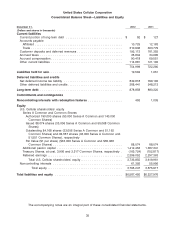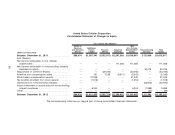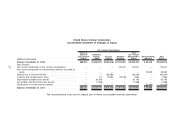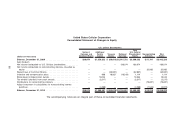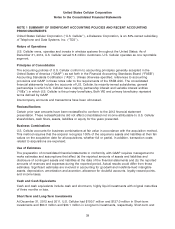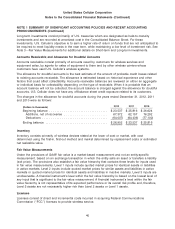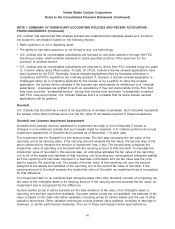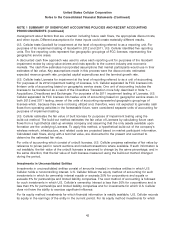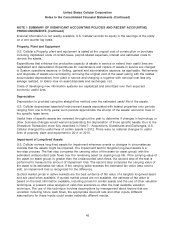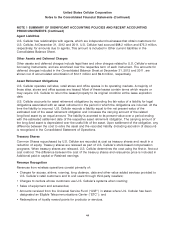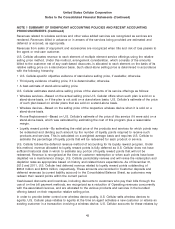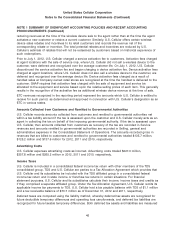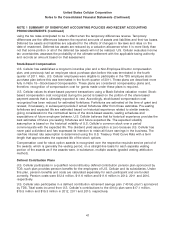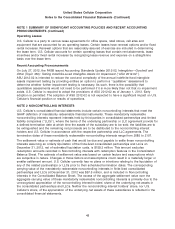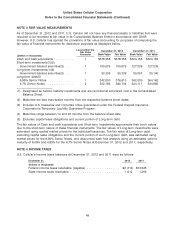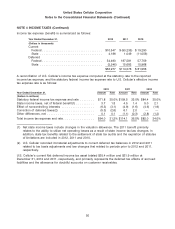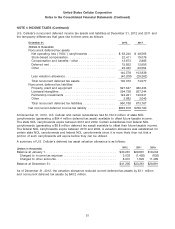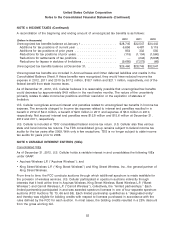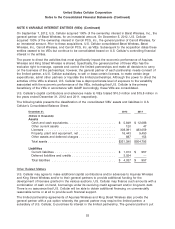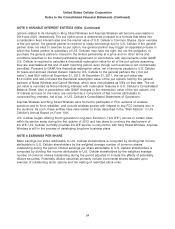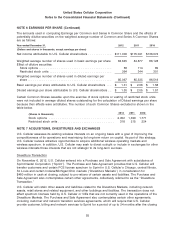US Cellular 2012 Annual Report Download - page 53
Download and view the complete annual report
Please find page 53 of the 2012 US Cellular annual report below. You can navigate through the pages in the report by either clicking on the pages listed below, or by using the keyword search tool below to find specific information within the annual report.United States Cellular Corporation
Notes to the Consolidated Financial Statements (Continued)
NOTE 1 SUMMARY OF SIGNIFICANT ACCOUNTING POLICIES AND RECENT ACCOUNTING
PRONOUNCEMENTS (Continued)
Revenues related to wireless services and other value added services are recognized as services are
rendered. Revenues billed in advance or in arrears of the services being provided are estimated and
deferred or accrued, as appropriate.
Revenues from sales of equipment and accessories are recognized when title and risk of loss passes to
the agent or end-user customer.
U.S. Cellular allocates revenue to each element of multiple element service offerings using the relative
selling price method. Under this method, arrangement consideration, which consists of the amounts
billed to the customer net of any cash-based discounts, is allocated to each element on the basis of its
relative selling price on a stand-alone basis. Such stand-alone selling price is determined in accordance
with the following hierarchy:
• U.S. Cellular-specific objective evidence of stand-alone selling price, if available; otherwise
• Third-party evidence of selling price, if it is determinable; otherwise
• A best estimate of stand-alone selling price.
U.S. Cellular estimates stand-alone selling prices of the elements of its service offerings as follows:
• Wireless services—Based on the actual selling price U.S. Cellular offers when such plan is sold on a
stand-alone basis, or if the plan is not sold on a stand-alone basis, U.S. Cellular’s estimate of the price
of such plan based on similar plans that are sold on a stand-alone basis.
• Wireless devices—Based on the selling price of the respective wireless device when it is sold on a
stand-alone basis.
• Phone Replacement—Based on U.S. Cellular’s estimate of the price of this service if it were sold on a
stand-alone basis, which was calculated by estimating the cost of this program plus a reasonable
margin.
• Loyalty reward points—By estimating the retail price of the products and services for which points may
be redeemed and dividing such amount by the number of loyalty points required to receive such
products and services. This is calculated on a weighted average basis and requires U.S. Cellular to
estimate the percentage of loyalty points that will be redeemed for each product or service.
U.S. Cellular follows the deferred revenue method of accounting for its loyalty reward program. Under
this method, revenue allocated to loyalty reward points is fully deferred as U.S. Cellular does not have
sufficient historical data in which to estimate any portion of loyalty reward points that will not be
redeemed. Revenue is recognized at the time of customer redemption or when such points have been
depleted via a maintenance charge. U.S. Cellular periodically reviews and will revise the redemption and
depletion rates as appropriate based on history and related future expectations. As of December 31,
2012 and 2011, U.S. Cellular had deferred revenue related to loyalty reward points outstanding of
$56.6 million and $38.9 million, respectively. These amounts are recorded in Customer deposits and
deferred revenues (a current liability account) in the Consolidated Balance Sheet, as customers may
redeem their reward points within the current period.
Cash-based discounts and incentives, including discounts to customers who pay their bills through the
use of on-line bill payment methods, are recognized as a reduction of Operating revenues concurrently
with the associated revenue, and are allocated to the various products and services in the bundled
offering based on their respective relative selling price.
In order to provide better control over wireless device quality, U.S. Cellular sells wireless devices to
agents. U.S. Cellular pays rebates to agents at the time an agent activates a new customer or retains an
existing customer in a transaction involving a wireless device. U.S. Cellular accounts for these rebates by
45


